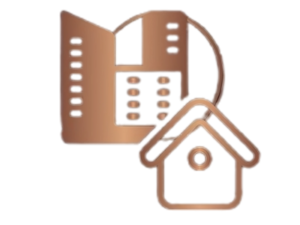ApexStone Capital | Strategic Multifamily Investments for Long-Term Growth
Breaking Down Multifamily Investing: Understanding Key Terms Like AAR, CoC, and IRR

When diving into multifamily investing, you’re bound to come across terms like AAR, CoC, IRR, and Equity Multiple. At first glance, it may sound like an alphabet soup of jargon, and it’s easy to feel overwhelmed. However, understanding these terms is key to making informed, confident investment decisions.
So, how do these numbers actually work, and why should you care? Let’s break it down using real-world examples from our Portland Townhome project to demystify these metrics, and show you how they all contribute to strong returns.
1. AAR (Average Annual Return): 16-18%
What is it?
AAR tells you the average return you can expect on your investment each year, based on a project’s performance.
Why it matters:
When you’re investing in a multifamily project, you want to know what you’ll be getting annually. For instance, if you invest $100K, you could see $16K to $18K in annual returns. These returns could be used for anything from vacations to reinvestment, giving you flexibility and growth.
In short: This is the “how much am I making per year” number. It gives you an idea of how much your money is working for you over time. Think of it as money growing without you lifting a finger.
2. CoC (Cash-on-Cash Return): 6% pref (Starting at 3%)
What is it?
This is the actual cash hitting your account during the year, representing the return on your cash investment.
Why it matters:
Let’s say you invest $100K—your cash-on-cash return would be around $6K annually, starting at 3% in Year 1, as we settle the property. In Year 2 and beyond, we expect that number to jump to 6% as tenants settle in, rents increase, and expenses are optimized. It’s the “money coming into your mailbox” factor.
In short: This return is actual cash flow that you can pocket, helping you pay for other expenses or even reinvest into more opportunities. The better the CoC, the more immediate cash you can access.
3. IRR (Internal Rate of Return): 14-15%
What is it?
IRR calculates the annualized rate of return on your investment, factoring in both the income generated and the capital appreciation over time.
Why it matters:
This is your money hustling over time, with compounding growth. Essentially, IRR answers the question: “How hard is my money working to generate long-term growth?” For this deal, we’re targeting a solid 14-15% IRR, which is like the CrossFit champ of investment returns. It’s a growth strategy that compounds over time, giving you more bang for your buck.
In short: If you’re looking for compounding returns over time, IRR is the number you’ll want to track. It shows you how your investment grows beyond just annual returns, factoring in the time value of money.
4. Equity Multiple: 1.6x to 1.7x
What is it?
Equity multiple gives you a clear idea of how much your investment will grow. Essentially, this tells you how many times your initial investment you will walk away with after the project completes.
Why it matters:
For example, let’s say you invest $100K in the project. If the equity multiple is 1.6x, you’ll receive $160K after 4-5 years, which means you’re walking away with an extra $60K.
In short: The equity multiple shows how much you’ll ultimately earn from your investment in terms of total growth. It gives you a clear picture of your financial return after the project’s life cycle.
5. The Power of Multifamily Investing
One of the unique things about multifamily investing is that it’s not about just adding new units or doing heavy renovations. Instead, the goal is to optimize the current property—adjusting rents, trimming expenses, and increasing operational efficiency. It’s not about swinging a hammer, it’s about smart strategy.
For example, consider the Portland Townhome Project we’re currently working on. Our focus is on increasing Net Operating Income (NOI) without drastic renovations. Simply increasing rents to market value and reducing unnecessary expenses leads to huge jumps in property value and, in turn, investor returns.
Understanding the Numbers Makes You a Smarter Investor
These metrics, when understood properly, paint a clear picture of what to expect from your investment. They’re not just jargon; they’re strategic tools that let you assess whether a deal is worth your time and money.
Once you understand how AAR, CoC, IRR, and Equity Multiple work together, you can make more confident investment decisions and ultimately build your wealth in multifamily real estate.
Share this post:
- Client : Enetrac int.
- Date : January 14, 2022.
- Link : info@archo.com
- Trade : Architecture.
Project Description
- Annual award for architecture work.
- Professional design approved by stakeholders.
- Fast software and modeling for reality interior design.
- True activated software and modeling for reality.
- Drawing software and modeling for reality engineering.
- True activated software and modeling for reality.
- Client : Enetrac int.
- Date : January 14, 2022.
- Link : info@archo.com
- Trade : Architecture.






